edgemere
Edgemere is a conceptual architecture targeted to multi-hybrid cloud and edge computing strategies including data,application, service, and infrastructure management. With the growth of IoT devices management of these elements from edge to data center is important to the success of the solution.
Edgemere is a conceptual architecture targeted to multi-hybrid cloud and edge computing strategies including data, application, service, and infrastructure management. With the growth of IoT devices management of these elements from edge to data center is important to the success of the solution.
In enable have a system that is future proof and expandable it is important to understand how different parts of the system relate to each other and to establish isolation layers (through common interfaces or abstractions). This isolation allows for the different subsystems in the solution to “grow” in parallel with minimal effect on the each other. With the end goal in mind and the establishment of interfaces between the sub-systems new features for hardware or software can be added progressively toward the utopian end state.
For detail information about micro-service architecture, use cases, and subsystems on edgemere click here.
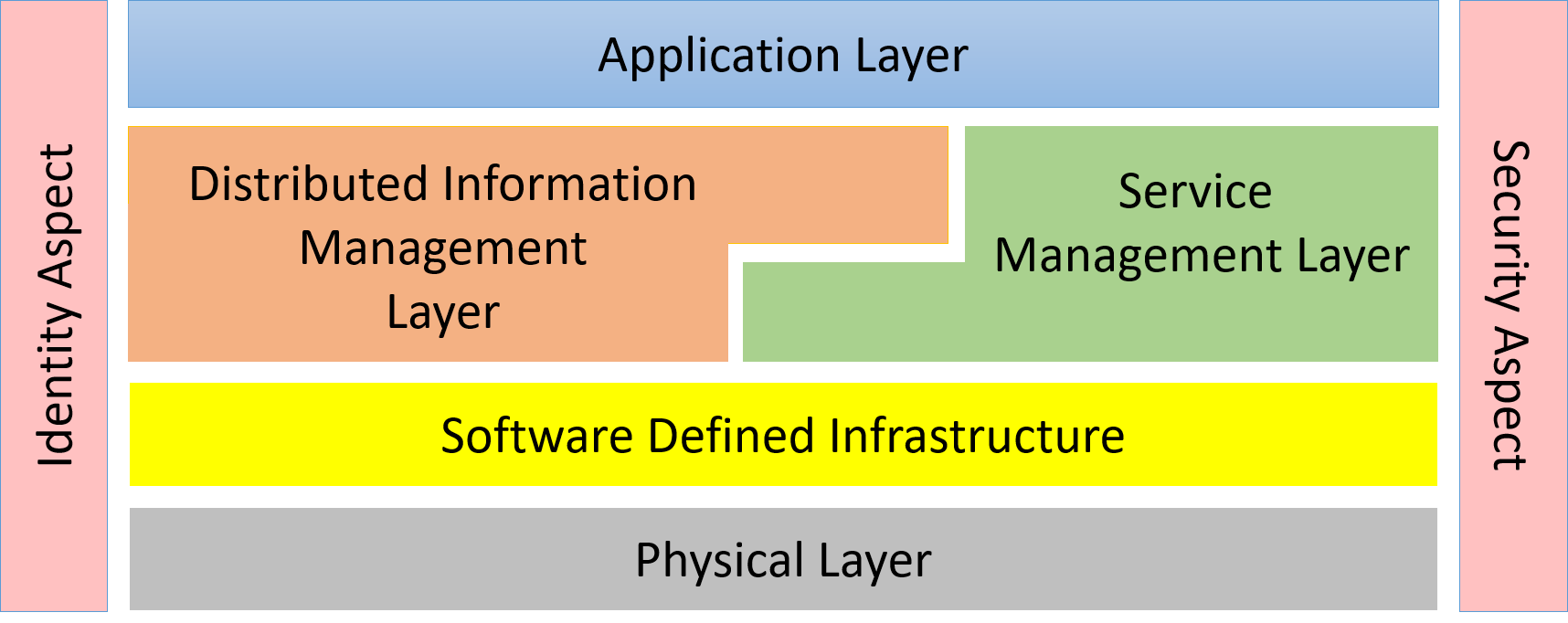
This diagram shows how the different subsystems fit together. A quick understanding of each layer will expose the responsibilities of each layer.
- Application Layer – Responsible for the management (development, test and deployment) of applications in the solution
- Distributed Information Management Layer – Responsible for the management (curation, governance, lifecycle management, and tagging) of data across a heterogeneous infrastructure (Cloud, Data Center, Edge and Client).
- Service Management Layer – Responsible for the deploying, monitoring, and provisioning of services (containers) in the solution.
- Software Defined Infrastructure – Responsible for the management (deploying, monitoring and provisioning) of infrastructure (Compute, Storage, Network, and Accelerators) in the solution.
- Physical Layer – Responsible for the command, control and monitoring of the physical devices in the solution.
- Security Aspect – Gives a common security model across the subsystems of the solution.
- Identity Aspect – Give the ability to uniquely identify and attest identity of users, hardware, applications, services, and virtual resources.
Many organizations have many of these subsystems already in their toolbox of solutions. Understand what you are currently using and how those tools fit together and how they interface with each other is important. One of the goals is to utilize the current tools as a foundation to build upon for the future end goal. A roadmap of technology and process changes shows how the foundation can be built upon to achieve the long term architecture.
Use Cases
The following are the use cases of the edgemere subsystem. Each use case has primary and secondary scenarios that are elaborated in the use case descriptions.
- Control Virtual Infrastructure
- Coordinate Services
- Govern Identities
- Manage Physical Infrastructure
- Organize Solutions
- Provide Business Information
- Secure Assets
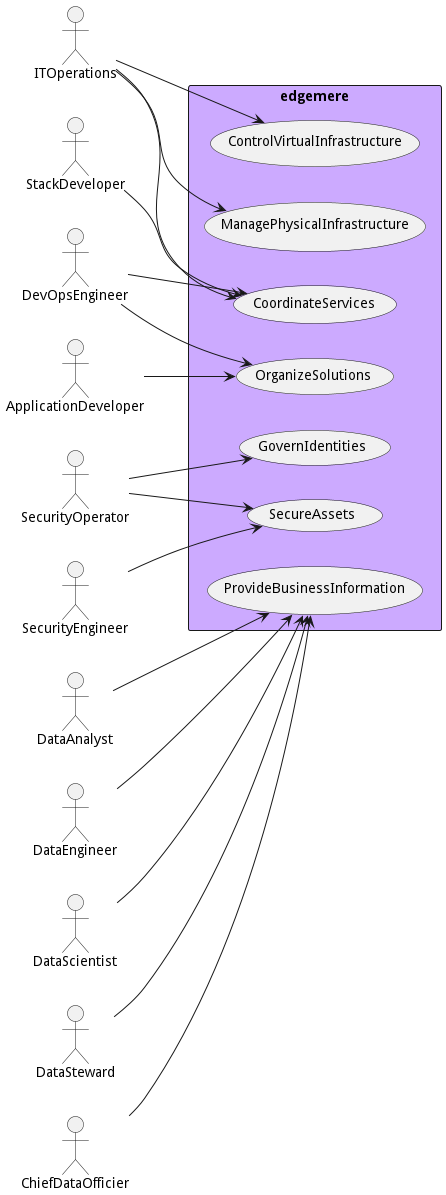
Users
The following are the actors of the edgemere subsystem. This can include people, other subsystems inside the solution and even external subsystems.
- ITOperations
- StackDeveloper
- DevOpsEngineer
- SecurityOperator
- ApplicationDeveloper
- DataAnalyst
- DataEngineer
- DataScientist
- DataSteward
- ChiefDataOfficier
- SecurityEngineer
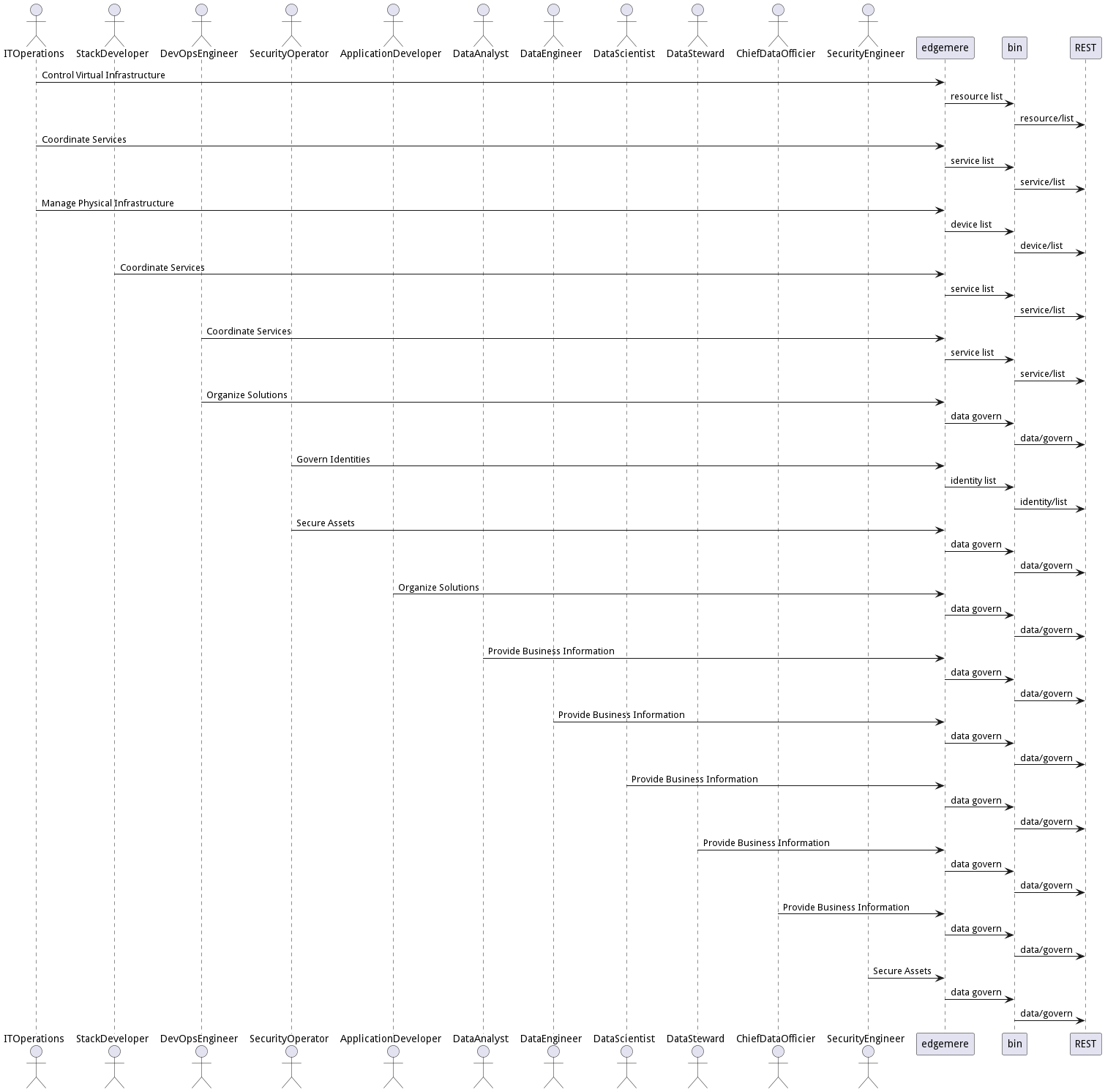
Interface
The subsystem has a REST, CLI, WebSocket, and Web interface. Use Cases and Scenarios can use any or all of the interfaces to perform the work that needs to be completed. The following diagram shows how users interact with the system.
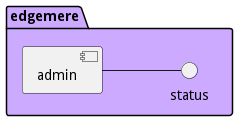
Logical Artifacts
The Data Model for the edgemere subsystem shows how the different objects and classes of object interact and their structure.
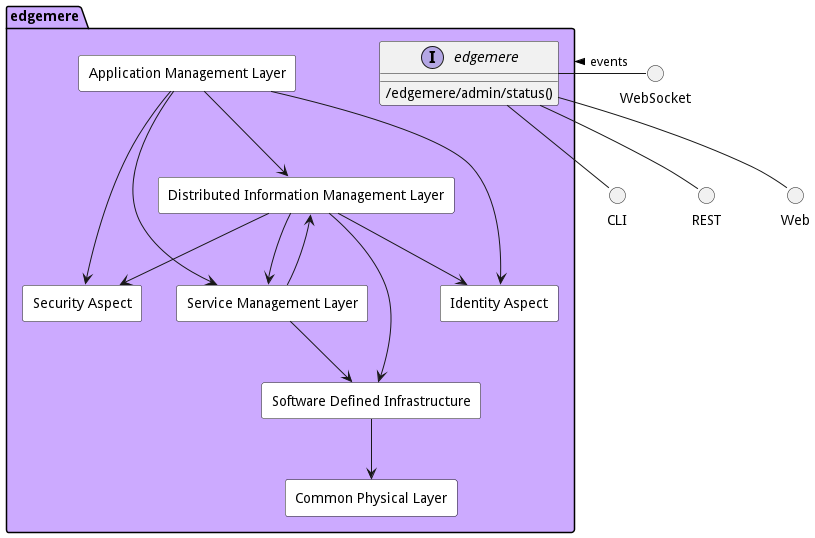
Sub Packages
The edgemere subsystem has sub packages as well. These subsystems are logical components to better organize the architecture and make it easier to analyze, understand, design, and implement.
- Application Management Layer
- Common Physical Layer
- Distributed Information Management Layer
- Identity Aspect
- Security Aspect
- Service Management Layer
- Software Defined Infrastructure
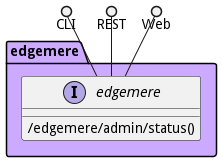
Classes
The following are the classes in the data model of the edgemere subsystem.
Deployment Architecture
This subsystem is deployed using micro-services as shown in the diagram below. The ‘micro’ module is used to implement the micro-services in the system. The subsystem also has an CLI, REST and Web Interface exposed through a nodejs application. The nodejs application will interface with the micro-services and can monitor and drive work-flows through the mesh of micro-services. The deployment of the subsystem is dependent on the environment it is deployed. This subsystem has the following environments:
Physical Architecture
The edgemere subsystem is physically laid out on a hybrid cloud infrastructure. Each microservice belongs to a secure micro-segmented network. All of the micro-services communicate to each other and the main app through a REST interface. A Command Line Interface (CLI), REST or Web User interface for the app is how other subsystems or actors interact. Requests are forwarded to micro-services through the REST interface of each micro-service. The subsystem has the a unique layout based on the environment the physical space. The following are the environments for this subsystems.
Micro-Services
These are the micro-services for the subsystem. The combination of the micro-services help implement the subsystem’s logic.
local
Detail information for the local environment can be found here
Services in the local environment
- web : edgemere_web
- doc : edgemere_doc
dev
Detail information for the dev environment can be found here
Services in the dev environment
- aml : aml
- cpl : cpl
- diml : diml
- ia : ia
- sa : sa
- sml : sml
- sdi : sdi
- web : edgemere_web
- doc : edgemere_doc
test
Detail information for the test environment can be found here
Services in the test environment
- aml : aml
- cpl : cpl
- diml : diml
- ia : ia
- sa : sa
- sml : sml
- sdi : sdi
- web : edgemere_web
- doc : edgemere_doc
prod
Detail information for the prod environment can be found here
Services in the prod environment
- aml : aml
- cpl : cpl
- diml : diml
- ia : ia
- sa : sa
- sml : sml
- sdi : sdi
- web : edgemere_web
- doc : edgemere_doc
Activities and Flows
The edgemere subsystem provides the following activities and flows that help satisfy the use cases and scenarios of the subsystem.
Messages Sent
| Event | Description | Emitter | |——-|————-|———|
Interface Details
The edgemere subsystem has a well defined interface. This interface can be accessed using a command line interface (CLI), REST interface, and Web user interface. This interface is how all other subsystems and actors can access the system.
Action edgemere admin status
- REST - /edgemere/admin/status?
- bin - edgemere admin status
- js - .edgemere.admin.status({ })
Description
Status of the edgemere installation
Parameters
No parameters